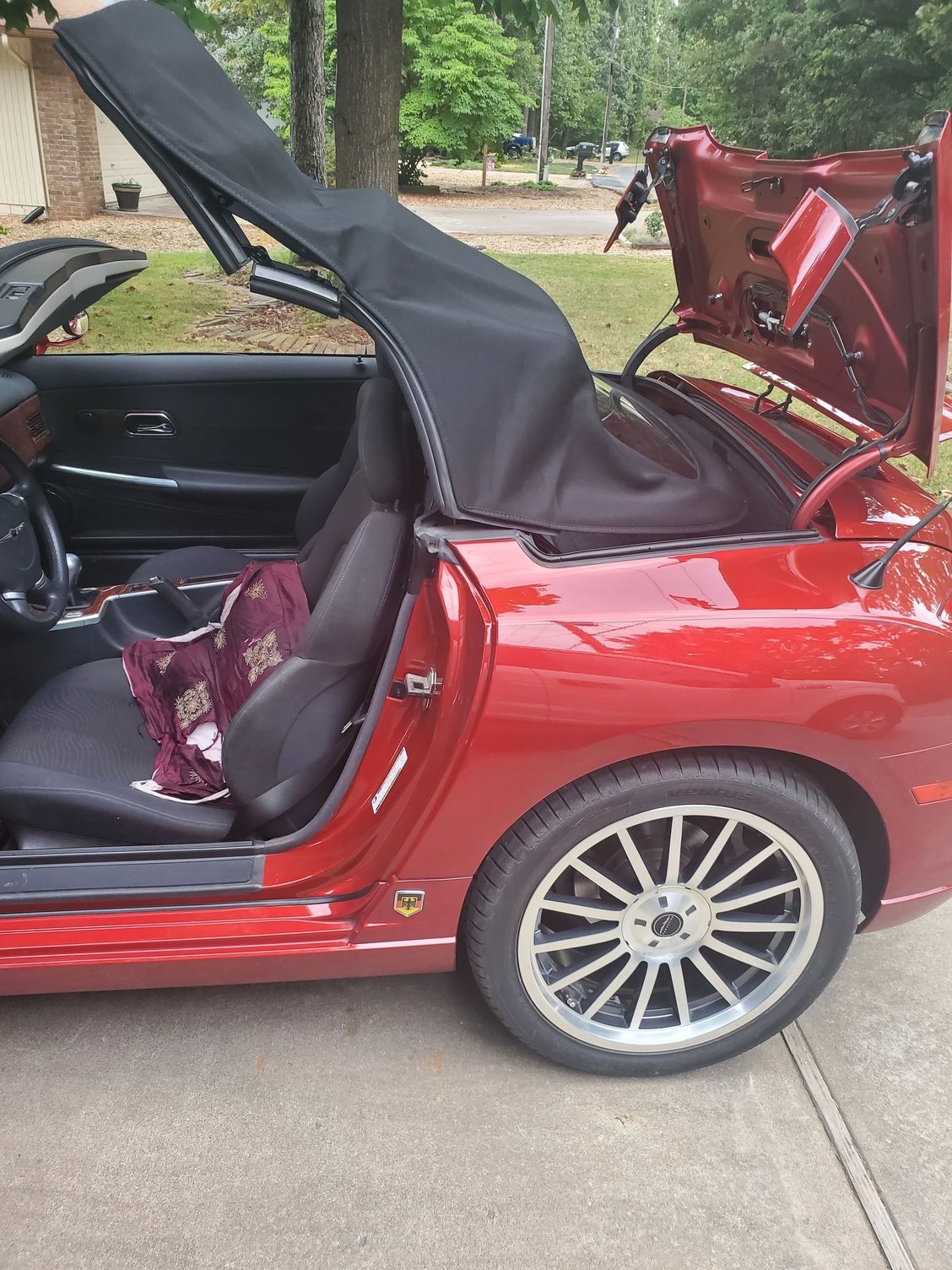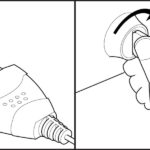For Chrysler Crossfire convertible owners, a malfunctioning roof can be a major headache. Before you assume complex hydraulic failures, it’s crucial to understand the simpler components that often cause problems. This article focuses on two critical switches – the divider switch and the top open switch – and how to use your OBDII scanner to diagnose issues related to them, ensuring your convertible top operates smoothly and safely.
Understanding the Role of the Divider and Top Open Switches
Imagine you’re about to lower your Crossfire convertible top. Two things must be guaranteed to prevent damage: the cargo divider in the trunk must be in place, ensuring nothing obstructs the roof’s descent, and the top must be completely detached from the windshield frame. This is where the divider and top open switches come into play.
These switches are wired in series and act as safety interlocks. The top open switch activates (closes) when the top is released from the windshield. Simultaneously, the divider switch closes when the trunk divider is correctly positioned. When both switches are closed, they send a ground signal to pin 7 on connector C1 of the PTCM (Convertible Top Control Module). This signal is the PTCM’s “safe to proceed” confirmation, allowing it to initiate the hydraulic pump and begin the roof lowering sequence.
 Crossfire convertible top switches location and function
Crossfire convertible top switches location and function
Decoding the Convertible Top Operation Sequence
When you press the convertible top button in your Crossfire, a sequence of checks happens rapidly before the roof even starts to move. Here’s a breakdown:
- Speed Check: The PTCM verifies with the BCM (Body Control Module) that the vehicle speed is below 9 mph. This is a safety feature to prevent operation while driving.
- Spoiler Position Check: The PTCM checks if the rear spoiler is either fully retracted or fully extended. An intermediate position might interfere with roof operation.
- Trunk Closure Check: The system confirms the trunk is fully closed. An open trunk will obviously obstruct the convertible top mechanism.
- Trunk Lock Engagement: An electric lock in the trunk lid engages, securing the trunk for the duration of the roof cycle. The PTCM expects confirmation of this lock engagement.
- Pump Activation & Bow Latch Release: Only after all these checks, and crucially, if the divider and top open switches are closed, does the PTCM activate the hydraulic pump. This then releases the bow latch, initiating the roof lowering process.
Troubleshooting with OBDII: Switch Issues and Symptoms
While an OBDII scanner might not directly pinpoint a faulty divider or top open switch with a specific fault code, understanding their function is vital for diagnosis. Here are common scenarios and how switch issues manifest:
-
Top Stops Mid-Cycle: If the divider switch becomes intermittent – perhaps due to slight movement of the divider – it can interrupt the ground signal to the PTCM. While the system initially ignores these switches after a certain point in the lowering process (as illustrated in the image above), a momentary loss of signal before that point can halt the roof operation.
-
Top Won’t Go Down, But Goes Up: This is a classic symptom of a divider or top open switch problem. When raising the top, the PTCM does not initially rely on these switches. However, as the top approaches the windshield frame during the upward cycle, the PTCM does check them. If a switch is open (faulty), the system might beep, but crucially, it will still allow the top to go up, recognizing the urgency to close the roof. However, when you then try to lower it, the faulty switch prevents the pump from activating.
-
Suspect the Divider Switch First: Experience shows that the divider switch is far more prone to failure than the top open switch. Its location in the trunk makes it susceptible to damage or misalignment.
Proceed with Caution: Bypassing Switches
It’s tempting to bypass these switches, especially the divider switch, to overcome a perceived problem. While some owners have bypassed the divider switch (emphasizing the need to manually ensure the divider is always up), NEVER bypass the top open switch.
Bypassing the top open switch eliminates a critical safety feature. If accidentally activated with the top still latched to the windshield frame, the pump could engage, leading to severe damage to cylinders, hydraulic lines, or pump motor overload.
Using your OBDII Scanner for Convertible Top Diagnosis:
While not directly switch-specific, an OBDII scanner can be invaluable.
- Check for PTCM or BCM related fault codes: Although less common for simple switch failures, there might be codes related to circuit continuity or general convertible top malfunctions that can provide clues.
- Live Data Monitoring (Advanced Scanners): Some advanced OBDII scanners can access live data from the PTCM. Look for parameters related to switch status or sensor inputs. While you might not see “divider switch status,” you might see data that indicates the PTCM is not receiving the expected “safe to start” signal, pointing to a switch or wiring issue.
- Systematic Elimination: Use your OBDII tool in conjunction with manual checks. If there are no relevant fault codes, and you suspect a switch, manually inspect and test the divider and top open switches for continuity. This hands-on approach, combined with OBDII insights, is often the most effective way to troubleshoot Crossfire convertible roof problems.
Conclusion
Understanding the function of the divider and top open switches is fundamental to diagnosing issues with your Crossfire convertible roof. While an OBDII scanner may not directly read these switch statuses, it’s an essential tool for checking for related fault codes and potentially accessing live data from the PTCM. Combined with careful manual inspection of the switches and wiring, you can effectively troubleshoot and resolve many convertible top problems, keeping your Crossfire enjoyable for open-top cruising.

